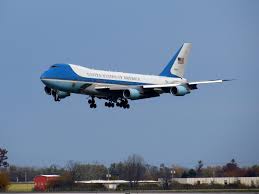An In-Depth Look at the Air Force 1 Plane

Introduction to the Air Force 1 Plane
The Air Force 1 plane is not just any aircraft; it holds a significant place in the realm of aviation and politics as the official transport for the President of the United States. It serves as a symbol of the presidency and represents a mobile command centre that ensures the safety and efficiency of the Commander-in-Chief’s travel. This aircraft plays a vital role in American political culture and international relations, making it an essential fixture in modern governance.
Historical Context and Evolution
The term “Air Force One” refers to any Air Force aircraft carrying the President. However, it is most notably associated with the Boeing 747-200B models VC-25A, which were specifically designed and modified for presidential use. The first use of a dedicated presidential aircraft was in the early 1940s during Franklin D. Roosevelt’s presidency. Over the years, the aircraft has evolved and adapted to the changing needs of the presidency, upgrading avionics and security features in the face of contemporary threats.
Specifications and Features
The current Air Force 1 planes are equipped with advanced technology and security systems, including military-grade communication systems that allow the President to conduct business from the air. They feature self-sufficient fuel systems and can even refuel mid-air, extending their range significantly. Additionally, the interiors provide all the comforts of a private jet, including a conference room, living quarters, and an operating room, complementing its primary function of transportation with a degree of sophistication conducive to executive operations.
Recent Events and Implementations
In recent years, the Air Force has begun the transition to the next generation of presidential aircraft, the Boeing 747-8, which will replace the current VC-25A models. The new planes will include enhancements such as more fuel efficiency and greater comfort, with the first of these new aircraft expected to be operational by the mid-2020s. In addition to physical upgrades, the need for cybersecurity features has become increasingly paramount as the threats to airborne security have evolved.
Conclusion
The Air Force 1 plane is a symbol of the United States presidency, embodying both power and logistical sophistication. As it transitions into newer models, it will continue to play an integral role in the functions of the Executive Office. For citizens and observers alike, understanding the significance of the Air Force 1 enriches our appreciation of the complexities of presidential travel and security. As technology advances, so too will the capabilities of this iconic aircraft, ensuring that it remains a pivotal instrument in the execution of presidential duties.









